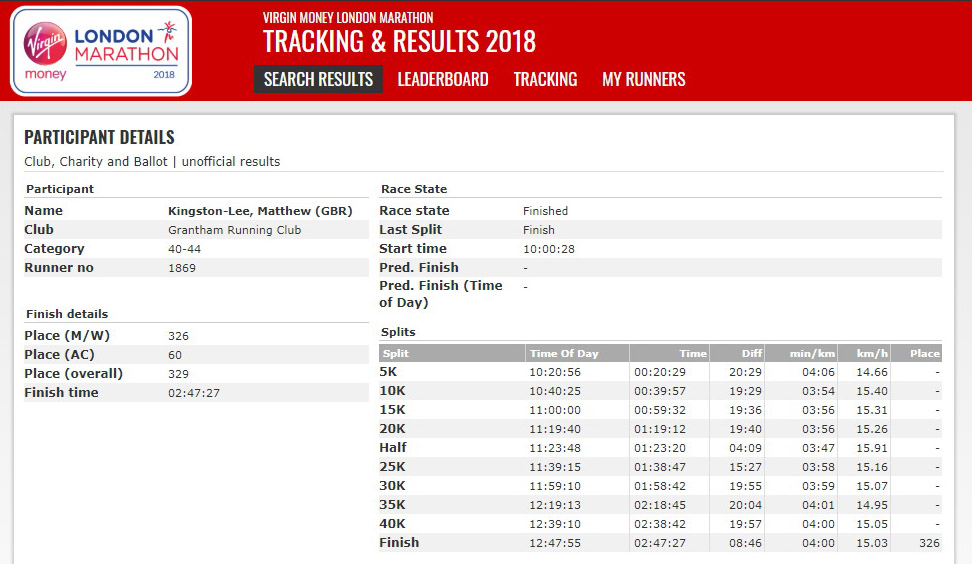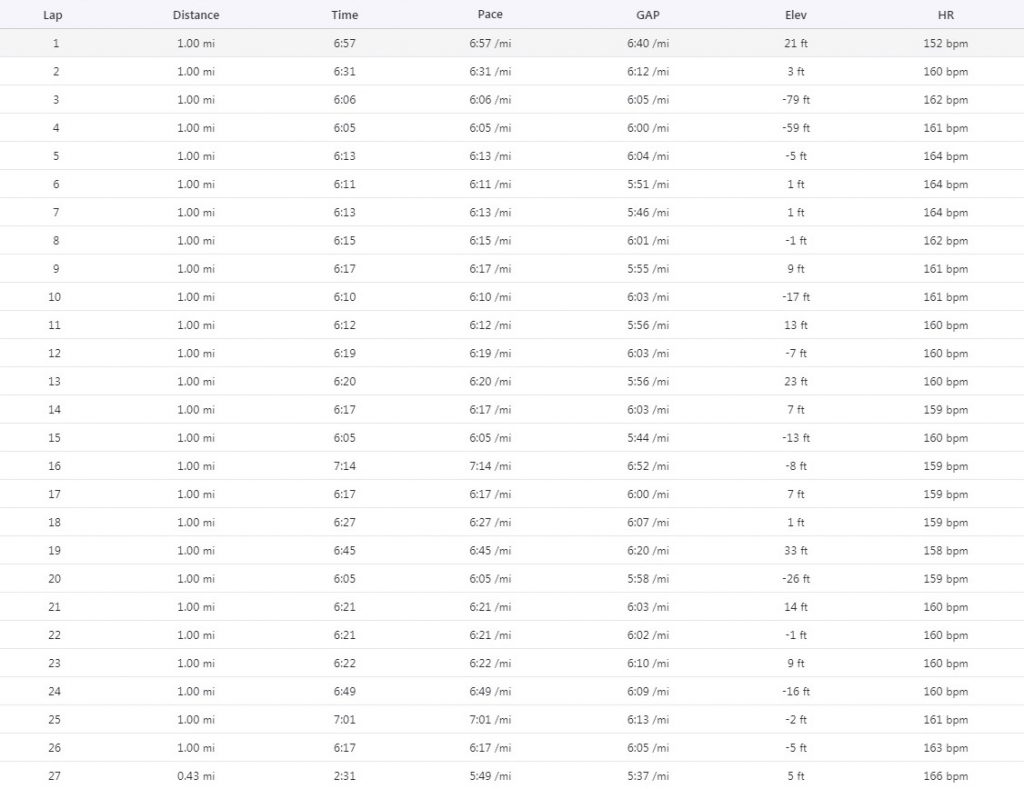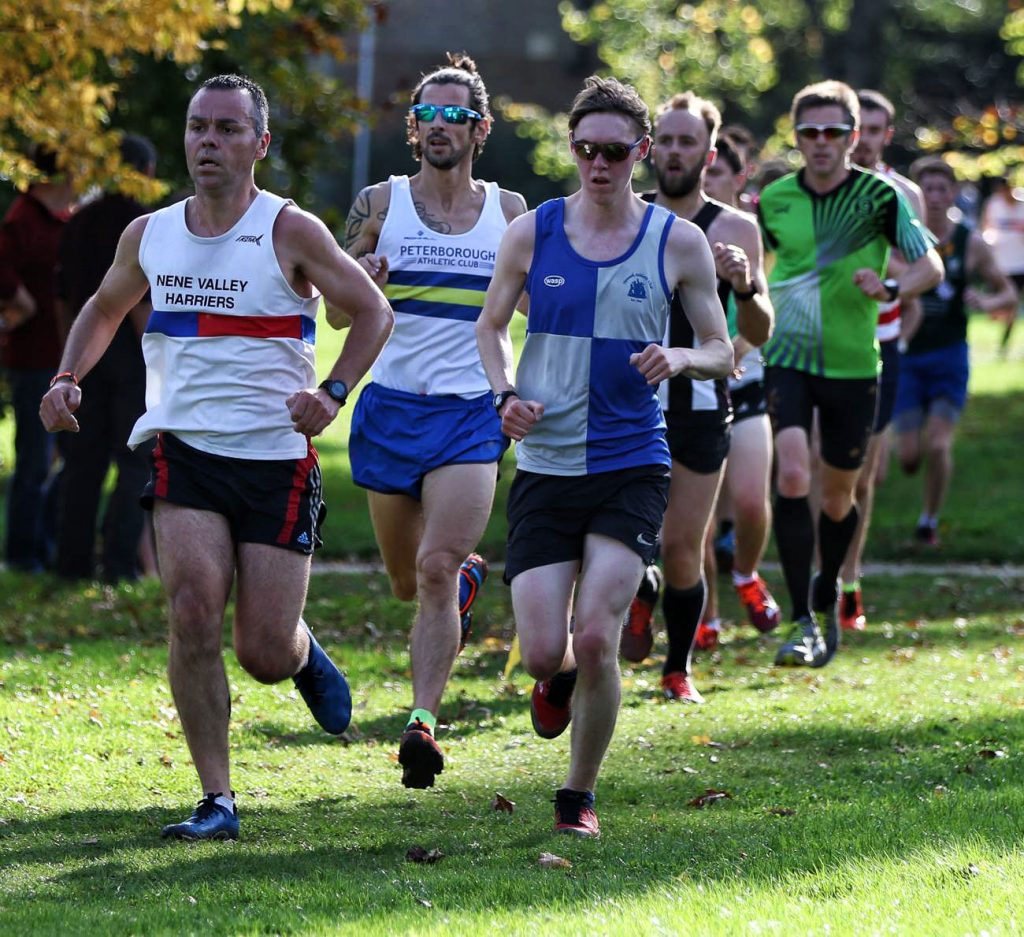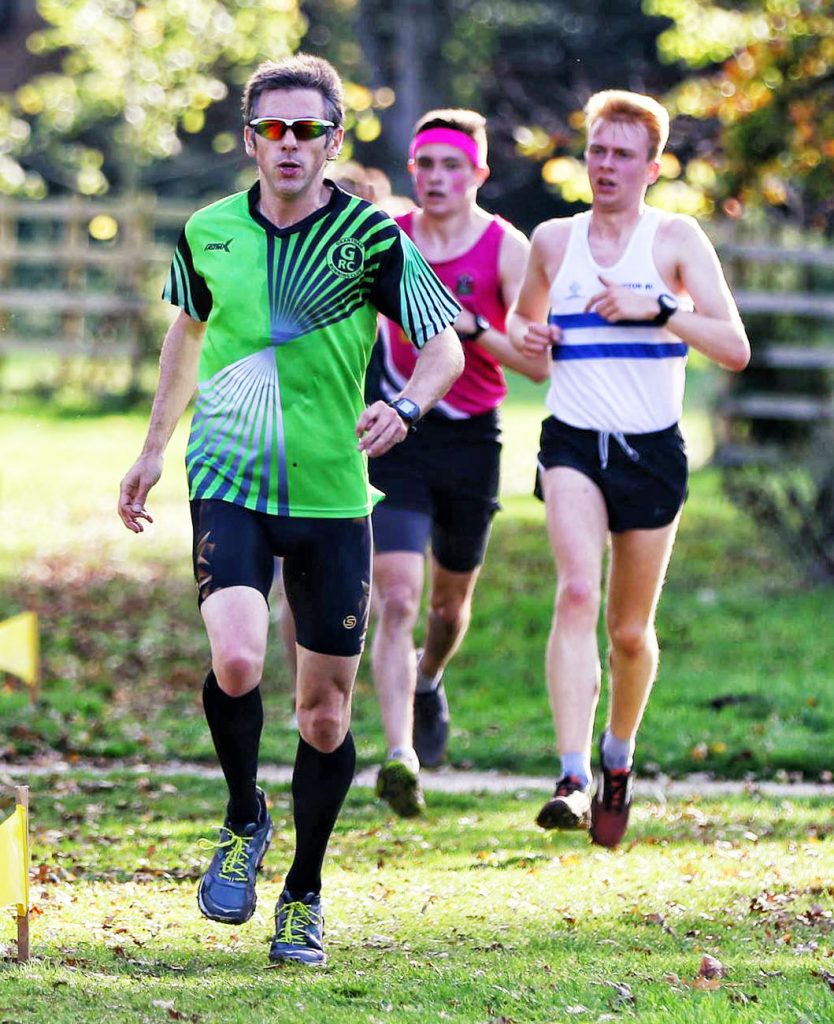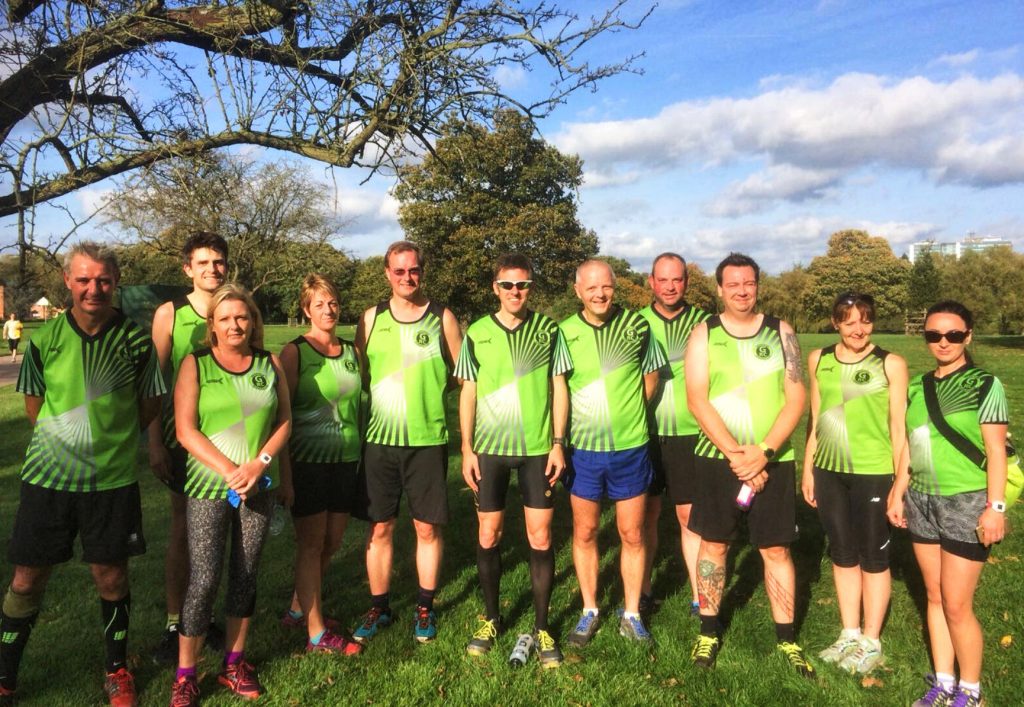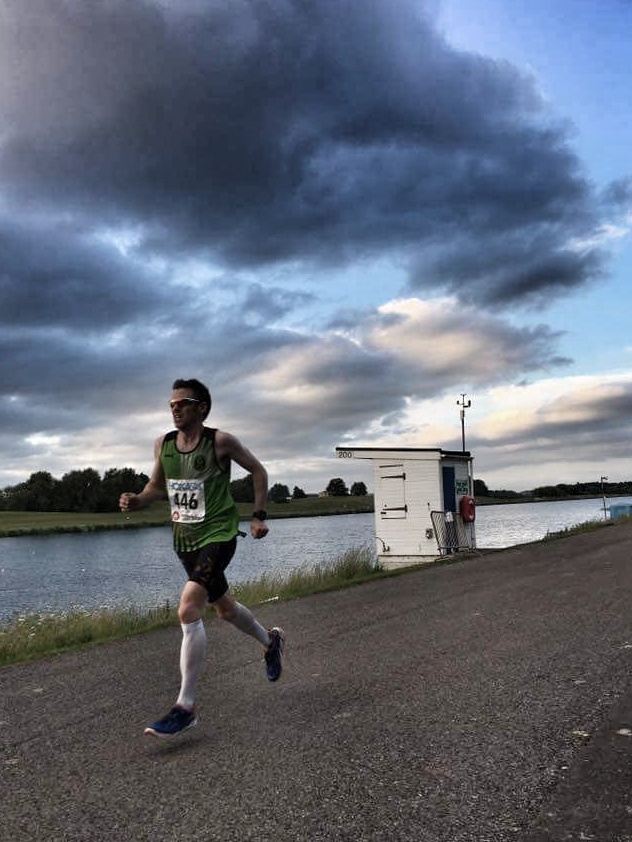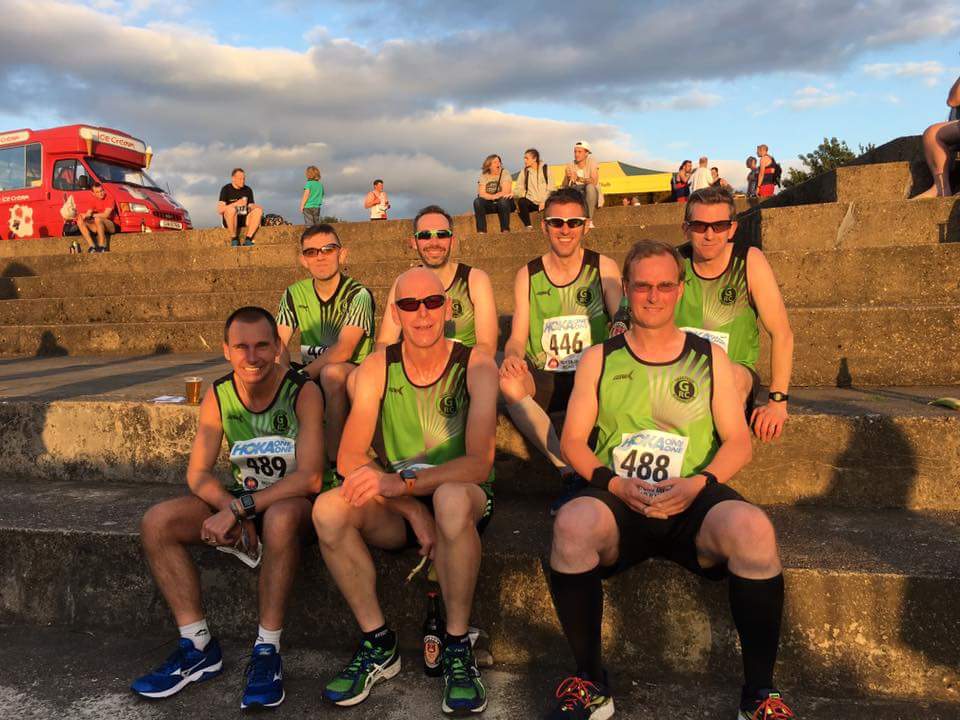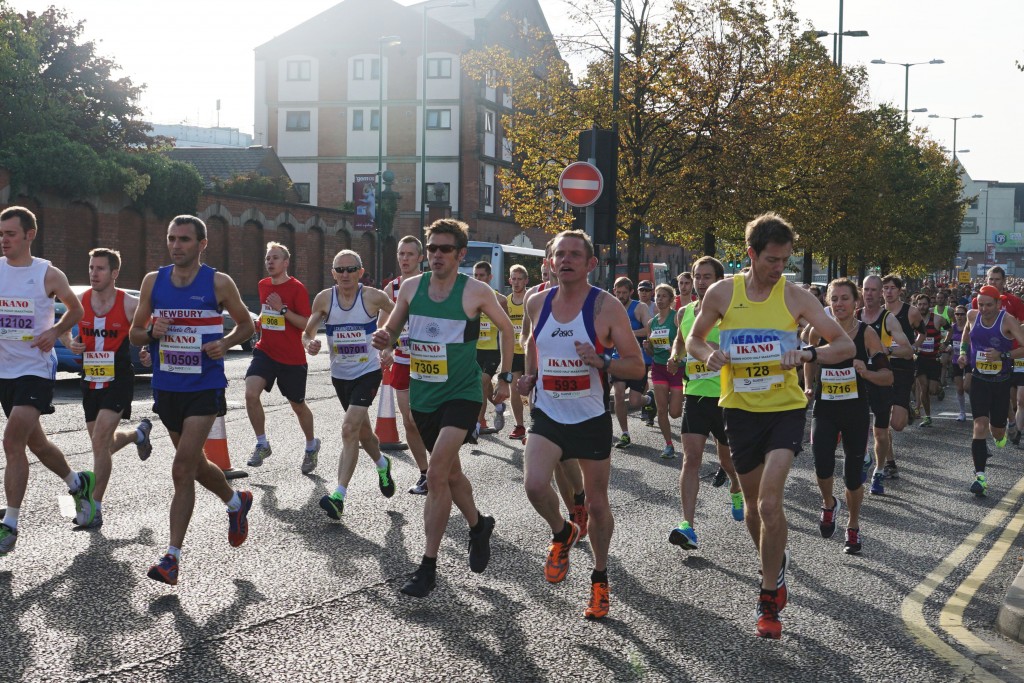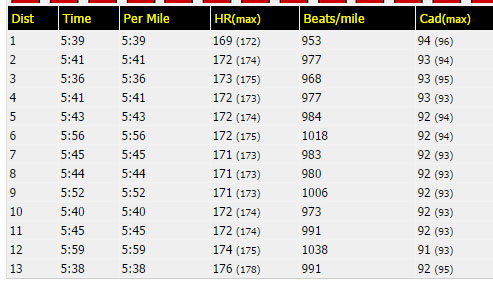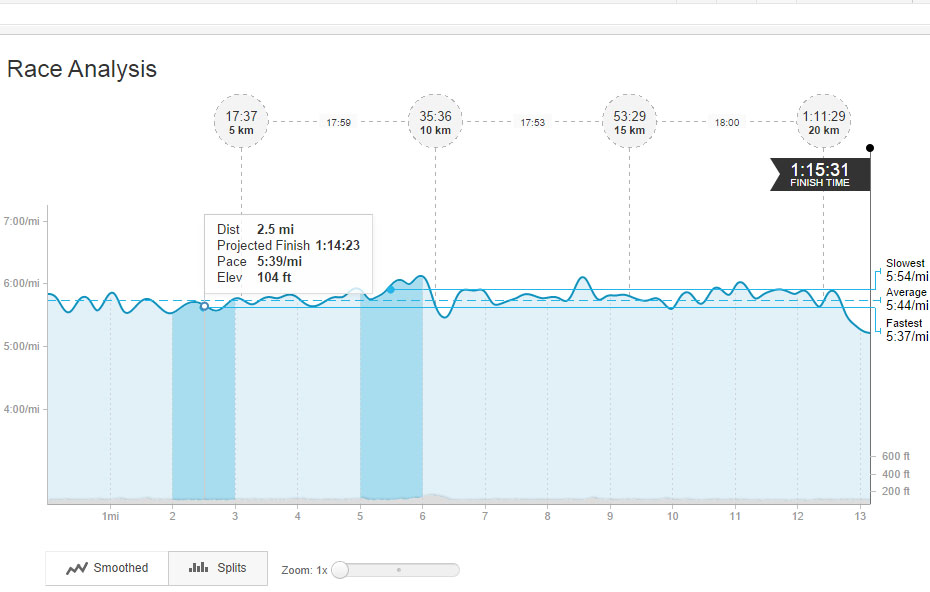Preparation
The rescheduled Keyworth Turkey Trot, back in the middle of February, had come in the early weeks of marathon training and was a positive indicator that, despite a couple of months of injury, I was heading in the right direction towards another stab at my marathon PB of 2:41:42, set at London in 2017. Little did I know at the time that this race, treated partly as a training effort, would be the last time I raced until London itself.
My marathon training was a subtle remix of what worked back in 2017: mostly easy paced (Zone 2) runs with a weekly long run, usually on a Saturday incorporating a parkrun, run at tempo pace, somewhere in the middle, a medium long midweek run and a run with some marathon HR miles thrown in. In 2017 these were nearly always during the week, this year it transpired that more than planned were at the weekend as part of a long run.
I was also cycling, partly because I was training hopefully for a Duathlon in March and partly because I simply enjoy cycling. A harsh winter meant that I did less of the Sunday morning Reliability Rides than in previous years and spent more time on the turbo trainer thanks mainly to finally being on board with Zwift and thoroughly enjoying the virtual racing and training world that offers. A big difference compared to 2017 and 2016 especially is that I spent a lot less time on the elliptical trainer. This is for a couple of reasons – a lot of the elliptical trainer sessions were replaced with Zwift and I also put in more running miles than in previous years. Indeed, the three largest mileage weeks, 79, 83 and 86 miles, were probably the largest mileage weeks since March 2014 when I put in my only 100 mile week.
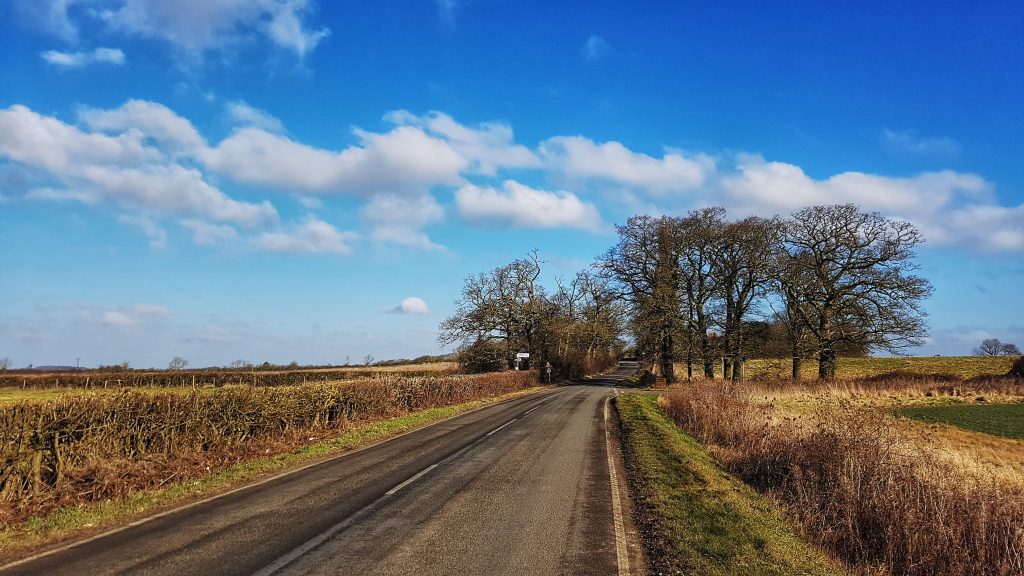
The long runs were run pretty quick – in February and March they averaged 6:37 pace. This was partly due to having parkruns thrown in most of them run in around 18 minutes, The bad weather disrupting plans meant I put in more long runs than normal, when I would have otherwise been cycling or racing. Some very cold sub-zero conditions at the back end of February saw back to back long runs: 20.5 miles at 6:26 average then the next day 22 miles at 6:46 average.
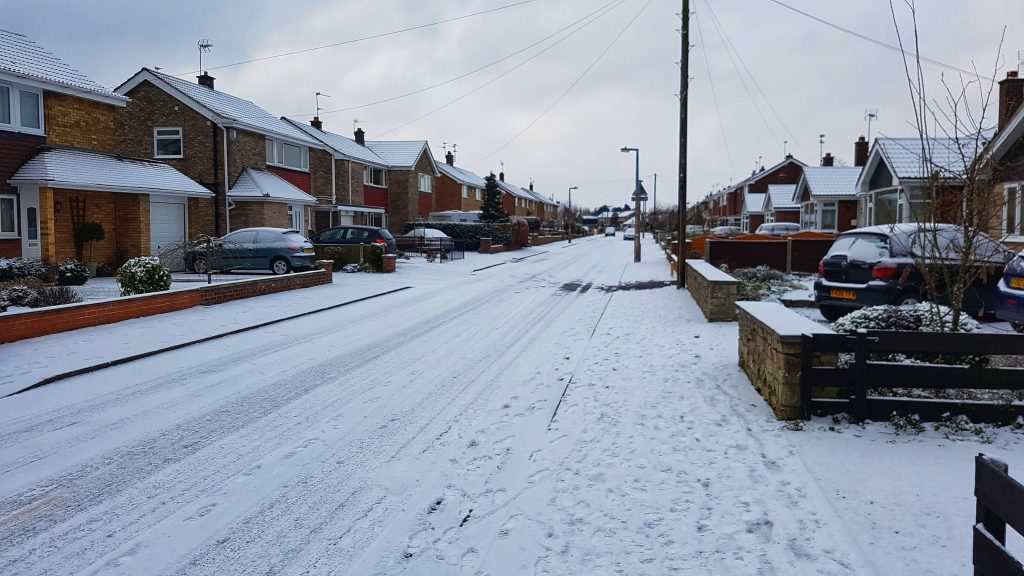
I tapered for the Newton’s Fraction Half Marathon in early March only to have the Beast from the East scupper the plans of a fast half effort as the race was postponed. Conditions were good to run on the day though and I put in 20 miles at 6:20 average on the Fraction course + extras. The following week I ran the course again, this time throwing in an 18:27 parkrun and some extras, totalling 27 miles in 2:59. My 24 mile time was 2:39:10 – which I expected I was capable of come marathon day.
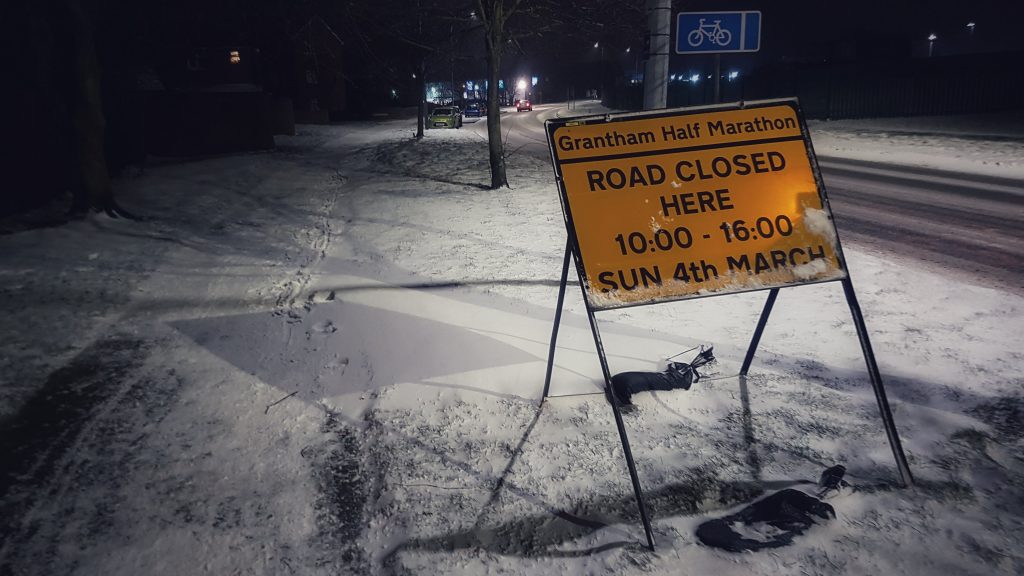
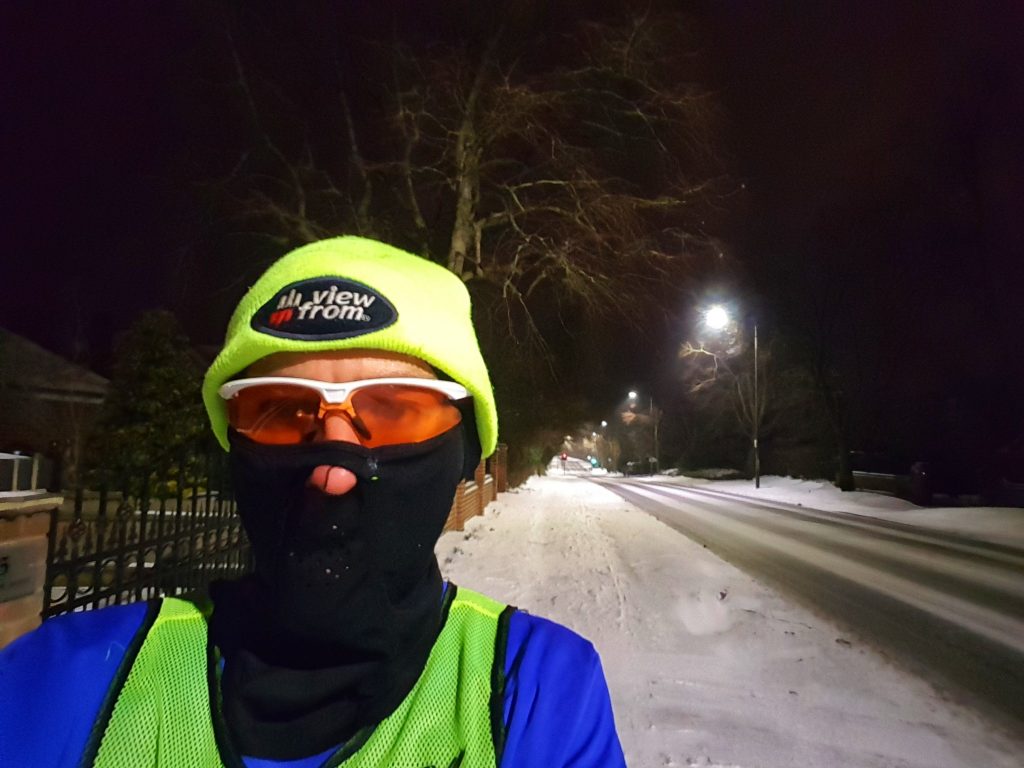
That was more or less the peak of my marathon training for work and night shifts and more bad work and illness began to see some of the hard work unravel. With the Fraction postponed until the autumn I looked to the weekend of the 18th and 19th March to focus on a race. My first choice was the Clumber Park Duathlon but I delayed entering too long and it sold out. I then thought about the Coventry Half Marathon, the Lincoln 10K or the Holdenby Duathlon, eventually opting for the latter. As it happened the latter was the first to be postponed due to the Beast from the Easy II on the Friday. I took my frustrations out on an easy paced 10 mile run at 6:20 average. Saturday morning I joined some fellow Duathletes who were equally frustrated that morning’s Clumber Park Duathlon had been postponed, when arguably it shouldn’t have. We used the strong wind as good strength training on a 12 mile run at 6:36 pace.
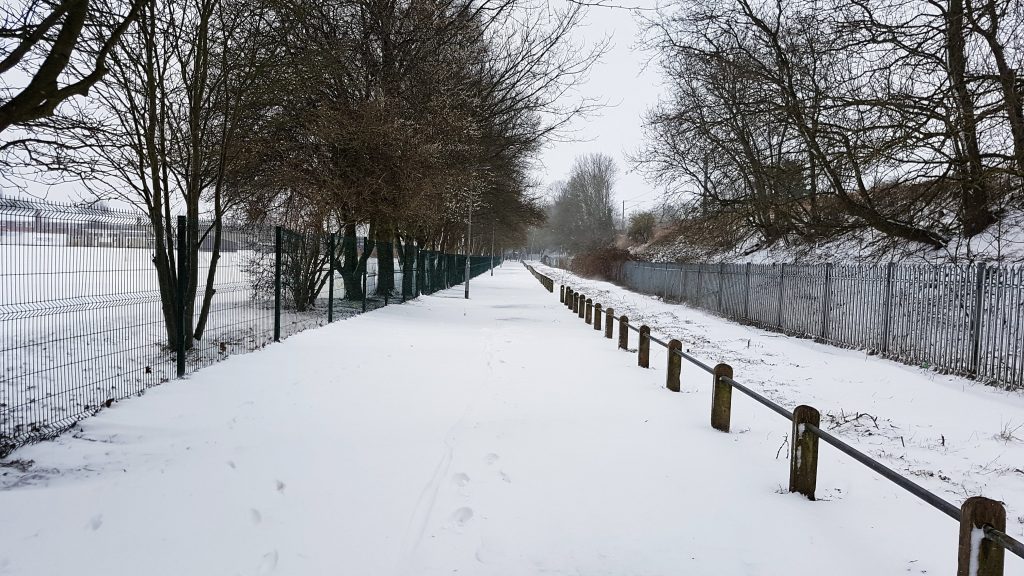
Then on Sunday morning the snow came and the Lincoln 10K was postponed and the Coventry Half Marathon was cancelled altogether. It was back to the Fraction Course for a sometimes slippy 20 miles at 6:44 pace. All these runs at solid pace was good training, perhaps ideal for the marathon, but I was really craving the opportunity to race, but by then it was too late as the weekends where there were races I was working and the weekends I was working there were no local races.
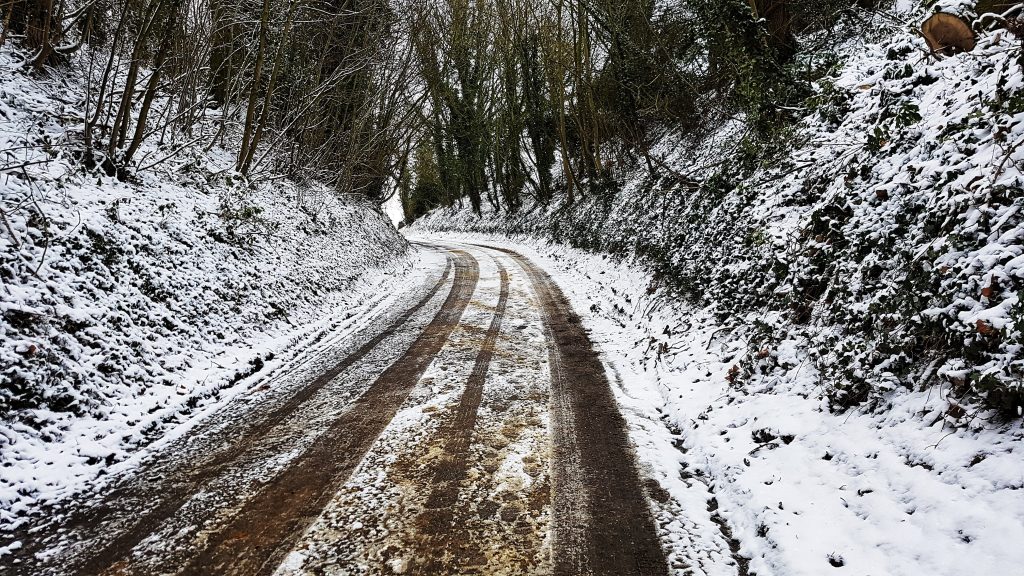
I had to make do with a poor effort at Boston parkrun on Easter Saturday, where I finished first but the effort was deliberately restrained with a long run planned on the Sunday, and a ten mile run just a couple of days after the Beast from the East disappeared, which was planned to be marathon HR, but ended up being much lower than that, yet saw me average 5:59 for the 10.2 miles – the fastest I’d ever run ten miles or more in training.
All the signs were there that I was in good shape but I lacked the validation of a race to prove it and that was difficult mentally to cope with. It didn’t help that just a few days after the Easter Sunday long run (a cold and windy 23 miles in the Fens at 6:40 average) I suffered the double whammy of a slight recurrence of the left hip flexor pains (which I was able to more or less fix with some additional glute excercises) and, more troublingly, a heavy cold and chest infection which I carried through the entire duration of the taper period and had not completely recovered from come race day. This meant I ran less miles than planned and mostly at a far lower intensity than hoped. I substituted some of the running with cycling, but even then it was a mixed bag, with some days feeling good; others the heart rate sky high and pace way down on what I’d expect.
The days leading up to the Marathon threw in another spanner – one I predicted could and probably would happen back when Beast from the East occurred. For most in Britain it was a blessing after the longest, harshest winter in living memory. For London Marathon runners it raised alarm bells aplenty and potentially threw months of hard work down the toilet: the forecasters very confidently predicted a very warm London Marathon!
The predicted temperatures – early to mid twenties Celsius – would be difficult to cope with even if we’d had months to acclimatise, such as we might if the marathon were in early September and we’d had a warm summer of running behind us. Indeed things may have been a little more palatable if we’d had a period of spring like weather in the weeks before London. As it was, until a week before London I believe I had run in nothing more than around 12C. I think I’d run once in a t-shirt and the vast majority of runs were cold enough to be consistently wearing a thermal base layer and running tights as a minimum.
The Saturday before London, with a bit of sun on my back, I went for my final run (13 miles). It may have been around 15C but with a cold breeze and the cold very much in my body still it hardly felt like a balmy run. On Monday monring, as things began to look a bit desperate, I rode on Zwift with all doors shut, the heating on and fans switched off. Alas the room barely crept above 18C…. The evening’s run was sunny, but felt chilly. Of some concern was the wheezing noises I was making when running as the chest infection still held a vice like grip on my lungs. Tuesday’s morning’s 10K was cold enough for long sleeved tops and gloves and I was wearing all but full thermals for that evening’s bike time trial.
Then, suddenly, it all changed. I awoke Wednesday and temperatures were predicted to reach around 21C. This was my last planned run day – 10 miles with 3 miles at marathon HR. I delayed the run as late as I could – midday, to try and get as much of the sun and warmth as possible. It was not an unbearable run, but the miles at pace were significantly slower and at a higher HR ( around 10 beats higher) than they were when temperatures were around 8C. They were though around the pace that I was looking to run for a sub 2:40 attempt. What was more concerning though was the final three miles of the run, where I shut it down and attempted to run as easily as possible i.e. with a low heart rate, proved virtually impossible, with the HR constantly creeping up and up while the pace was gradually dropping and dropping. This is a fairly normal phenomenon of running in the heat. It was also, I believe, indicative of the cold and chest infection still being in the body – this clearly evident at the end of the run where I went through the routine five minute coughing fit. This though was progress at least, a few days earlier and I was having these coughing fits during the run itself.
Before a marathon I often have three days of complete rest – it seems to work physically and mentally better than the much practiced option of reducing the mileage to a 5K the day before. The paranoia around picking up an injury is too much for me to cope with! However the Thursday before London was a scorcher! I sensed this could be too good an opportunity to miss to run in some real heat. Because I had a massage at lunchtime I was unable to run at the hottest part of the day but even at 6:30pm it was still in excess of 24C, albeit without the heat of the sun. I went for a 5 mile jog with GRC with just a minute or two at marathon pace to conclude my preparation. It didn’t feel uncomfortable but, once again, the HR was really high. The legs also felt really tired and generally I didn’t feel as if I was physically ready to attack a marathon. Just to complete the doom and gloom, the pollen count was rising and my eyes were itching…
By Saturday morning it was clear that, although there was a weather system coming in that would cool temperatures for much of the country, London on the Sunday of the marathon would remain hot. I looked back in my training log at when I ran London in 2007, the hottest London Marathon to date. On that warm, sunny day, with 500ml bottles compared to the smaller 330ml days we would be given this year, I ran the race to HR as normal and took on water every two miles until 14 miles then some water every mile until the finish, making sure I’d pour the undrunk contents over my head, which was covered with a cap. It seemed to work – my PB at the time was 2:57 and I managed to just break 3 hours on the day. The caveat though was that back in the day when I was an F1 jet setter, by the time the London Marathon had come around, I’d already spent time in and run at rather warmer locations, namely Melbourne, Kuala Lumpur, and Bahrain. Two hours running in the heat and humidity of KL made London almost like child’s play in comparison, as did a run in Bahrain which was a mere 42 Celsius. Without the benefit of tropical and desert preparation this time around, all I could do was run the race at an inevitably slower pace than planned and hope for the best.
The Race
In previous years I’ve driven down from Grantham on the morning to Stevenage train station and used public transport to make it to the start at Blackheath. After the debacle in 2017 with over-running engineering works I decided that I didn’t want to risk a repeat of that stress and so decided to go old skool and do what I did when I lived in Coventry, namely drive as far down to the event as possible before walking the remainder, with my wife driving the car to North London for collection after the race. This meant a slightly earlier depart (5:15 am) but for the most part this worked really well – arriving at Greenwich shortly after 7 am. Only in the very last stages did things go awry – a wrong turn or two and before we knew it we were unwittingly on a buses only road, getting mightily stressed, frustrated… and lost.
Eventually, after what seemed an eternity but was in reality around 10 minutes, I found the road I’d planned to be on all along and bid farewell to my wife. I’ll never be sure if it was the car journey or that stressful incident but, to my despair, within moments of walking towards the start I felt both hips began to seize up in a manner alarmingly reminiscent to twelve months earlier, when the right hip all but locked en route to the start. I knew that the best thing to do was not to panic but try and make my way as calmly as possible to the start where I could begin to work to alleviate the issue.
I was in the Championship start ten shortly after 8am, by no means the first to arrive, but significantly earlier than in previous years when I’ve arrived at 9:15 am to a packed tent and a rushed start. I grabbed myself some space and began not only to prepare clothing etc. for the race but do some stretches that I hoped would ease of the tight, sore hips. An hour later and it appeared I had worked some magic. They didn’t feel 100% but a very brief jog after dropping off my kit bag demonstrated they were okay to run.
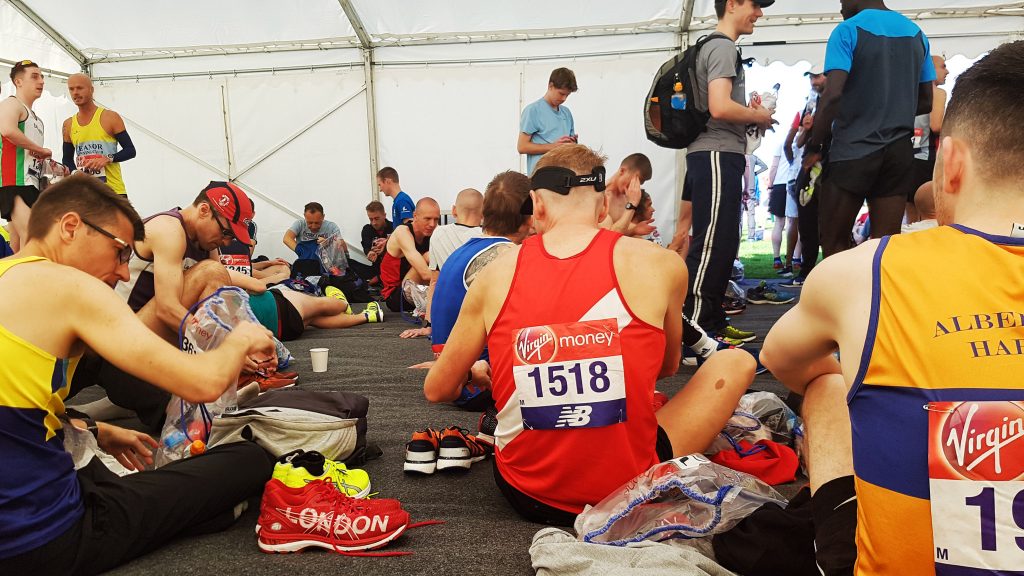
In that time I made sure I was well hydrated, drinking a litre of electrolyte, consuming my banana and customary pre-race Lidl Snickers. With the sky blue and temperatures already feeling like they were just shy of 20C, I decided to pass on the warm up jog and queue instead one last time for the toilets. All done and dusted I was ready to join the start at 9:50, ten minutes before the start of the race.
As we were slowly shepherded towards the start line behind the Elite men, there was some initial concern from the Championship starters that it seemed the masses were going to be allowed to start alongside the supposedly quicker runners. Tempers were just beginning to spill over when the masses were held back and we were allowed to fill the road at the start. The panic over, I took my customary position to the right hand side of the road (Not sure why I do this, but I do), and took advantage, as did many others, for one last pit stop against the sponsor hoardings. I just managed to do this before the National Anthem played. With the queen looking down on us via the big screen, I’m sure I could have been banged up for treason had I committed the offence of urinating mid-anthem.
Once the Queen had pressed the big red button from the luxury and splendour of Windsor Castle and we endured the unnecessary heart beat countdown, we were set off on our way. Under 20 seconds after the elites were set off I was too past the start line and on my way. And within a minute of running I knew it was going to be a game of survival.
The way I run marathons is quite simple – I observe a maximum HR of 165 bpm until 20 miles then as allow it to go as high as I can muster. The first three miles I gradually raise the HR, the first mile should have a maximum of 150 bpm, the second 155 bpm and the third 160 bpm before settling down to sit somewhere between 160 and 165 bpm.
This relaxed opening to a marathon means it’s not uncommon to see me going backwards through the field for the first mile or so before order is established and I tend to start picking off positions, hopefully all the way through to the finish. A minute into my run and I glanced at my watch. The HR read 153 BPM – already too high! I then looked at my average pace thus far – it was around 7:10! For the next three or four minutes, try as I could to get the HR below 150 BPM, short of stopping altogether, it seemed impossible. All the while literally hundreds and hundreds of runners passed me, the sub 3 pacer and the masses that clung with him, went storming past me.
I knew now was not the time to panic and abandon tried and tested plans. I made a small adjustment to the strategy, a bit of a risk, but one I was willing to take to avoid being swallowed up by what felt like the majority of the field. I allowed the first mile to average under 155 BPM, the second mile 160 BPM, and the third and subsequent miles 165 BPM. A small difference, one that may have consequences come the end of the race, but one that allowed me to run at something closer to the pace I expected while still keeping a reign on the early race exuberance that counts against so many runners in the closing stages of a marathon.
I went through mile one in 6:57 on the watch, under the banner a good 10 seconds slower than that. With the luxury of a few extra heart beats of juice mile two saw the pace increase to 6:31. The average HR was 160 BPM which indicates that no matter how hard I tried to keep the HR down, it was a battle that was very hard to beat. The second mile also saw the other key strategy played out – seek shade at all possible times, even if that meant running a slightly sub-optimal line. I found an opportunity during one of the extremely rare quieter spells of the course to run on the pavement, all but hugging a brick wall that offered near total protection from the sun. Psychologically and physically I felt as though I was gaining advantage over those who ran in the full glare of the sun.
Mile two was 6:31, the third mile saw the HR limit raised to 165 BPM, but as it was mainly downhill I only averaged 162 BPM, clocking 6:06 and 20:29 for the official 5K split. For comparison, in 2017, in near ideal conditions and with similar fitness levels, I clocked 19:16 for the opening 5K. I was resigned to this being largely a pointless marathon. Too hot to run a PB yet keen enough to attempt a good race to fully enjoy the frankly insanely loud crowd support, who were enjoying the great weather for spectating by coming out in numbers seemingly unprecedented even for London.
Shortly after two miles I passed the first of the water stations. The plan was simple and as advised by the race doctor – take one or two sips of water, except when I took on a gel (which I did at 7, 14, and 21 miles) when it would be half a 330ml bottle, then pour (or douse as is apparently now officially called) the rest over me – mostly over the head, but some on the wrists and arms and – in the later stages of the race especially – into the face in an attempt to try and keep the core temperature down. I pretty much did this at every one of the water stations which came at mile intervals. The only exception was the first of two stations, at around 9 miles I think, which trialled compostable cups, half filled with water and utterly useless – I grabbed two, dropped them, took a third to find once I’d taken a small sip of water there was basically none left to douse with. Thankfully at the second cup stop they had put on some additional water bottles which I gleefully grabbed having been left bitterly disappointed by the sparse content of the cups. I skipped the Lucozade bottles – bitter experience of throwing up the contents shortly after ingestion while racing meant I gave them a wide berth, even if they looked very tempting in the closing stages.
Mile 4 on the Garmin was the quickest of the race at 6:05 before I slowed to 6:13 for mile 5. Miles 6 to 17 were pretty constant, the quickest 6:11 and the slowest 6:20. The heart rate was quite interesting for once I peaked at around 164 BPM for miles 5-7 it dropped to 162 BPM for mile 8 and never got as high again. Indeed at mile 19 the average dropped to 158 BPM, although the perceived effort at this stage was probably the highest of the race – I was going through one of several bad patches at this stage. I think I’ve read theories into why this might happen – something to do with the body sending blood to the skin to cool it and so the larger muscles get less blood or something like that. There is also the possibility that by mile 9, with the temperature creeping up to the low 20s Celsius, I was really beginning to feel the heat and the central governor was already limiting my effort, aware that to keep pushing would end in an unpleasant manner. I was mindful of how hard the closing miles felt back in 2007 and I was determined to give myself the best opportunity to not suffer like that again.
I’ve often likened the marathon to a (rather unexciting) fuel economy run, where you spend most of the race running within yourself, all the while hoping you don’t blow up for reasons you cannot fathom. The 2018 London Marathon was like that except you now had to also try and cool components that were overheating and likely to fail at any moment. This, unfortunately, made the 2018 London Marathon one of the least enjoyable races I’ve taken part in. It was a game of survival for a T-Shirt and a medal. At times I wondered why I was even bothering to continue. But continue I did, and the further the race went on the better I appeared to be doing, compared to those around me at least.
I went through 10K in 39:57, the second 5K in 19:29. Not quite as quick as the 19:03 of 2017 but not too bad considering. 10K to 15K was 19:36, 15K to 20K 19:40. Slowing slightly but essentially even paced. I went though halfway in 1:23:20. On a cool day I’d give myself a fighting chance of a sub 2:45. Given the conditions, I set myself the tentative goal of trying to break 2:50. By now I had long stopped being passed by runners and was slowly but surely picking off others one by one. Almost unnoticed too the constant flow of runners had begun to form gaps. Although it really didn’t twig at the time, this was a sign that I was moving closer to the front of the field, relatively speaking, and that I must have passed a whole load of runners following the first mile when all I could see in front of me was a river of multicoloured vests and T-shirts (and a smattering of fancy dress costumes).
Leaving the section between 13-14 miles where you have runners at 21-22 miles in the other direction and we were onto Narrow Lane. I breathed a sigh of relief when I was able to pass the Portaloos at around 15 miles where down the years I have, more often than not, had to stop to use the facilities. The stomach didn’t exactly feel great, there were some mild cramps which I put down to the gels consumed and the higher than normal volume of water consumed, although with a dehydration headache beginning to consume me, clearly not as much as would be optimal to maintain full hydration. Each time I passed a Portaloo I felt the urge to stop but I resisted until the end of the race, thankfully without any unpleasant consequences.
20-25K was covered in 19:36. By now my Garmin was around a third of a mile over estimating the distance, as is quite normal at London. I often find the Garmin goes a bit crazy when we head under the roundabout underpass, spending around a minute outside of GPS coverage. The result this year around was that I went through the 16 mile banner almost exactly as the Garmin registered 16 miles. This was very handy! I had to disregard the 7:14 mile the watch showed, I hadn’t really slowed at all, just as I doubt I’d ran 6:05 the mile before.
Moving on from that excitement, the 5K between 25-30K, or miles 17 to 20 approximately, were the hardest of the race as we wound our way around the docks and Canary Wharf. While the crowd support was fantastic as ever and some of the buildings provided welcome shade, there were pockets of wind that almost stopped us in our tracks and a general feeling of weariness was taking over the body as well as some ominous cramping sensations in the quads. The 25-30K was not the slowest at 19:55, but it felt the hardest.
Some welcome relief came not long after in the form of a work colleague and friend James ‘Beaver‘ Bearne, who had come down to enjoy the day and to cheer on another friend’s sister, who had chosen a bad day to take part in her first ever marathon. I was aware of several friends and club mates who were dotted around the course. I’d spotted my wife and daughter at mile 9, just as I passed them, and club mate Paul Rushworth not long after. Thereafter the cumulative noise and volume of spectators and the shouts of ‘Come on Matt!’ aimed mostly at Matts other than myself, meant I had apparently missed quite a lot of people who were cheering specifically me on. Not Beaver though. At 20.5 miles just as we turned onto the road where runners come in the opposite direction at halfway, the loudest shout of ‘Come on Matt!!’ I’ve ever heard came right in my direction. Fully enthused by his command I pressed on, knowing that there was less than 10K left to run. The run from 30-35KM was the slowest of the race, after the opening 5K at 20:04. It should be noted though, that as well as being very warm, this was also run mostly into a headwind which, although hardly strong, was just firm enough to make it noticeably harder work than had it been behind us.
As I’ve done many times before the final 10K was a case of trying to run as hard as possible while not stressing the legs too much to the point of cramping, which they were doing in a mild, controllable manner, every mile or so. Mentally it was a case of breaking the race down into 5K chunks, then mile segments, then half miles, then a couple of minutes at a time, using the support of the crowd now to keep you going, when in the early stages I tried to block them out to try and stop me from getting carried away and running too fast.
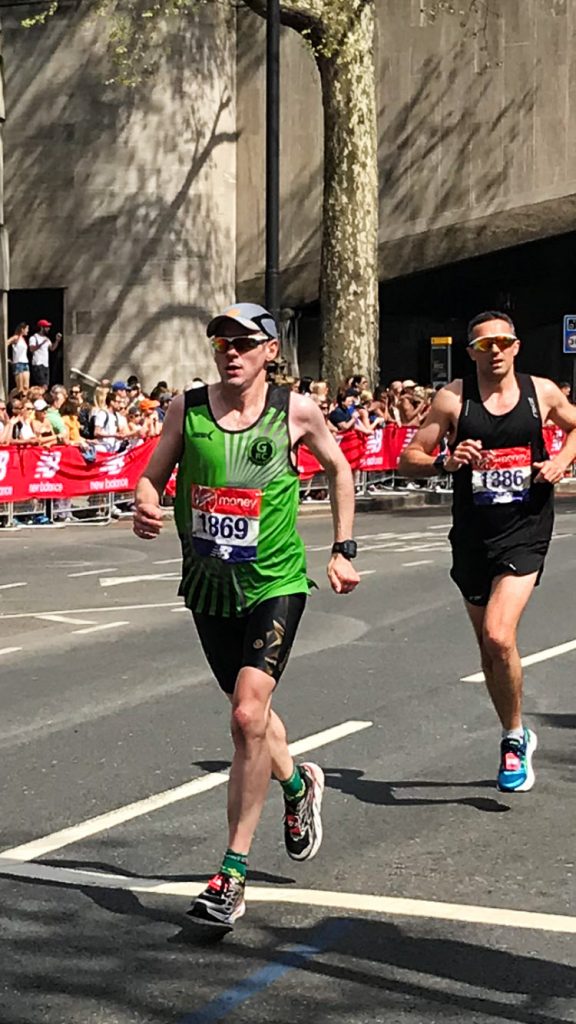
As we ran along the Embankment, passing Paul again and Helen (thanks for the picture!) I went through 40K, having covered the last 5k in 19:57. The underpass beforehand again saw my Garmin get confused – the pace had stayed constant and I hadn’t slowed to 6:49 and 7:01 miles. The gradual slowdown reversed, I let myself pick up the pace just a touch as we turned right at the scarcely recognisable Big Ben and headed towards the finish, safe in the knowledge that even if the legs cramped up I’d only likely lose a minute or so. Apparently, according to someone behind me at the finish, I put on quite a sprint at the end as I pulled well clear of him. I don’t recall it being that quick but what was noticeable was that in a race where everyone around me was finding the going tough (there are usually a fair few runners flying at the end of a race as they nail a negative split) I appeared to be finding it a little less tough than others.
The slow start had paid dividends and I finished the race with a mile significantly quicker than I started. It wasn’t as quick as I had hoped, but I survived the race intact and in a respectable time – 2:47:27. When the positions were worked out I wound up 329th overall, 51 places higher than in 2017 and my best ever finishing position at London. This was something at least to be proud of, pleased about, and some small justification for putting my body through this unnecessary distress of running in what turned out to be the hottest ever London Marathon, officially at least 23.2C and likely warmer in places with radiated heat from the roads and buildings.

The long post race walk from the finish via the baggage area and to the zone where I met up with the family was noticeably quieter, more subdued, than in previous years. It was full of weary men (I believe only three women finished ahead of me who began with the masses), very few of whom I assume achieved what they had hoped to through the months of training and, looking at some of the runners I follow on Strava, suffered far worse than I did in the closing stages due to the heat and, for the most part, going off too quickly for the conditions. I imagine many of them, as I did, thought there were far better ways to enjoy a very warm sunny Sunday in April than run 26.2 miles. But we all did and I am sure we will all do so again, many in twelve months time, when hopefully the weather gods are a little kinder to us and provide an opportunity to make amends the disappointment of 2018. Marathon running is an addictive business. You know it does you know good but you can’t help but come back for me.
Of course, tragically, there will be one runner who won’t be returning in 2019. For Matt, and the others I’ve had the great displeasure in being part of a race where tragedy has struck, my thoughts are forever with you and I hope that at the very least you succumbed doing something you loved to do. Which, despite all that I wrote above, I do pretty much every time I run. Like most events that cause pain and suffering, the worst of it has been blocked by the mind and I am beginning to look a little more fondly on the hottest London there has ever been and already looking forward to the next race, which is hopefully just around the corner in a week or so.
